If I have to choose one of the many auctions I have attended
over my career as the most impressive one, none would be as memorable as the recently concluded St. James's Sinkiang Coin Auction. This auction had coins of great rarity, rich variety, and excellent condition. It was one of the largest Sinkiang coin auctions in the past decades. Every Sinkiang coin enthusiast must have been excited previewing on the auction company's website, traveling to Hong Kong, attending the preview, and bidding on the floor.
As China's largest coinage system, Sinkiang coins were minted by five mints, with more than 300 types and 3,000 varieties, topping China's provincial coins. However, Sinkiang coins have not been paid much attention to by collectors for a long time, because of the poor information exchange, aesthetics, and general condition of most coins. Yet, Sinkiang coins, with their distinctive design style and wide range of varieties, have captured the attention of a large number of fans, including Professor David Spencer Smith, the consigner of this auction.
It is difficult to imagine how a Wimbledon-born Englishman became so keen on Sinkiang coins, which have a strong Islamic flavor, in the 1970s when information exchange was poor. Yet he had been focused on this field for decades. The reason will probably remain a mystery forever. Even though there is a huge gap brought about by geography, script, and religion, it did not stop Prof. David Spencer Smith from taking his Sinkiang coin collection to breathtaking heights.
According to the auction house, Professor David Spencer Smith was born in 1934 in the small town of Wimbledon in southwest London. After completing his PhD, he became an associate professor at the University of Miami. He began to become interested in collecting Sinkiang coins in the 1970s. With the help of many coin dealers around the world (including Stephen Album, Scott Semans, and John Albright in the United States, Andre de Clermont in London, and Ma Tak Wo in Hong Kong), he built up a well-organized collection with a wide range of varieties quickly. Decades ago, due to the poor exchange of information, these coins circulated in the border areas and were rarely recorded or published, Professor Smith collected as many different years and varieties as he could over the years. These real treasures found from the long river of history were put together into the most comprehensive collection of Sinkiang coins seen so far. Unlike other specialized auctions, Professor Smith preserved the evidence of their provenance of the coins in his collection as best as possible, making these precious coins true story-tellers.
The top-notch collection built up over half of Professor Smith's life was auctioned by St. James's Hong Kong Auction in December 2023. This was a complete collection with highly representative rare coins. Two silver coins with three scripts are the jewels in the crown of Sinkiang's coinage, the 5-mace Sinkiang ration silver coin with four bats tops all circulating Sinkiang coins, and the Sinkiang coin with Tariq art style inscription and the 1905 one-mace silver coin are the surviving chosen ones among the thousands of coins of this kind. Coupled with the pedigrees of famous collectors such as Eduard Kann and Goodman, this thin but heavyweight catalog ignored the poor market conditions and surpassed the grandeur of Poly's Kitaura Daisuke Collection Specialized Auction. The auction caused Sinkiang coin collectors to revel in the event.
Among these coins, some items are rarely seen even in Sinkiang where they were made. Sinkiang coin collectors who came to attend from far away could feast their eyes. In this article, we will appreciate the highlights of the auction.
over my career as the most impressive one, none would be as memorable as the recently concluded St. James's Sinkiang Coin Auction. This auction had coins of great rarity, rich variety, and excellent condition. It was one of the largest Sinkiang coin auctions in the past decades. Every Sinkiang coin enthusiast must have been excited previewing on the auction company's website, traveling to Hong Kong, attending the preview, and bidding on the floor.
As China's largest coinage system, Sinkiang coins were minted by five mints, with more than 300 types and 3,000 varieties, topping China's provincial coins. However, Sinkiang coins have not been paid much attention to by collectors for a long time, because of the poor information exchange, aesthetics, and general condition of most coins. Yet, Sinkiang coins, with their distinctive design style and wide range of varieties, have captured the attention of a large number of fans, including Professor David Spencer Smith, the consigner of this auction.
It is difficult to imagine how a Wimbledon-born Englishman became so keen on Sinkiang coins, which have a strong Islamic flavor, in the 1970s when information exchange was poor. Yet he had been focused on this field for decades. The reason will probably remain a mystery forever. Even though there is a huge gap brought about by geography, script, and religion, it did not stop Prof. David Spencer Smith from taking his Sinkiang coin collection to breathtaking heights.
According to the auction house, Professor David Spencer Smith was born in 1934 in the small town of Wimbledon in southwest London. After completing his PhD, he became an associate professor at the University of Miami. He began to become interested in collecting Sinkiang coins in the 1970s. With the help of many coin dealers around the world (including Stephen Album, Scott Semans, and John Albright in the United States, Andre de Clermont in London, and Ma Tak Wo in Hong Kong), he built up a well-organized collection with a wide range of varieties quickly. Decades ago, due to the poor exchange of information, these coins circulated in the border areas and were rarely recorded or published, Professor Smith collected as many different years and varieties as he could over the years. These real treasures found from the long river of history were put together into the most comprehensive collection of Sinkiang coins seen so far. Unlike other specialized auctions, Professor Smith preserved the evidence of their provenance of the coins in his collection as best as possible, making these precious coins true story-tellers.
The top-notch collection built up over half of Professor Smith's life was auctioned by St. James's Hong Kong Auction in December 2023. This was a complete collection with highly representative rare coins. Two silver coins with three scripts are the jewels in the crown of Sinkiang's coinage, the 5-mace Sinkiang ration silver coin with four bats tops all circulating Sinkiang coins, and the Sinkiang coin with Tariq art style inscription and the 1905 one-mace silver coin are the surviving chosen ones among the thousands of coins of this kind. Coupled with the pedigrees of famous collectors such as Eduard Kann and Goodman, this thin but heavyweight catalog ignored the poor market conditions and surpassed the grandeur of Poly's Kitaura Daisuke Collection Specialized Auction. The auction caused Sinkiang coin collectors to revel in the event.
Among these coins, some items are rarely seen even in Sinkiang where they were made. Sinkiang coin collectors who came to attend from far away could feast their eyes. In this article, we will appreciate the highlights of the auction.
Gold Coin
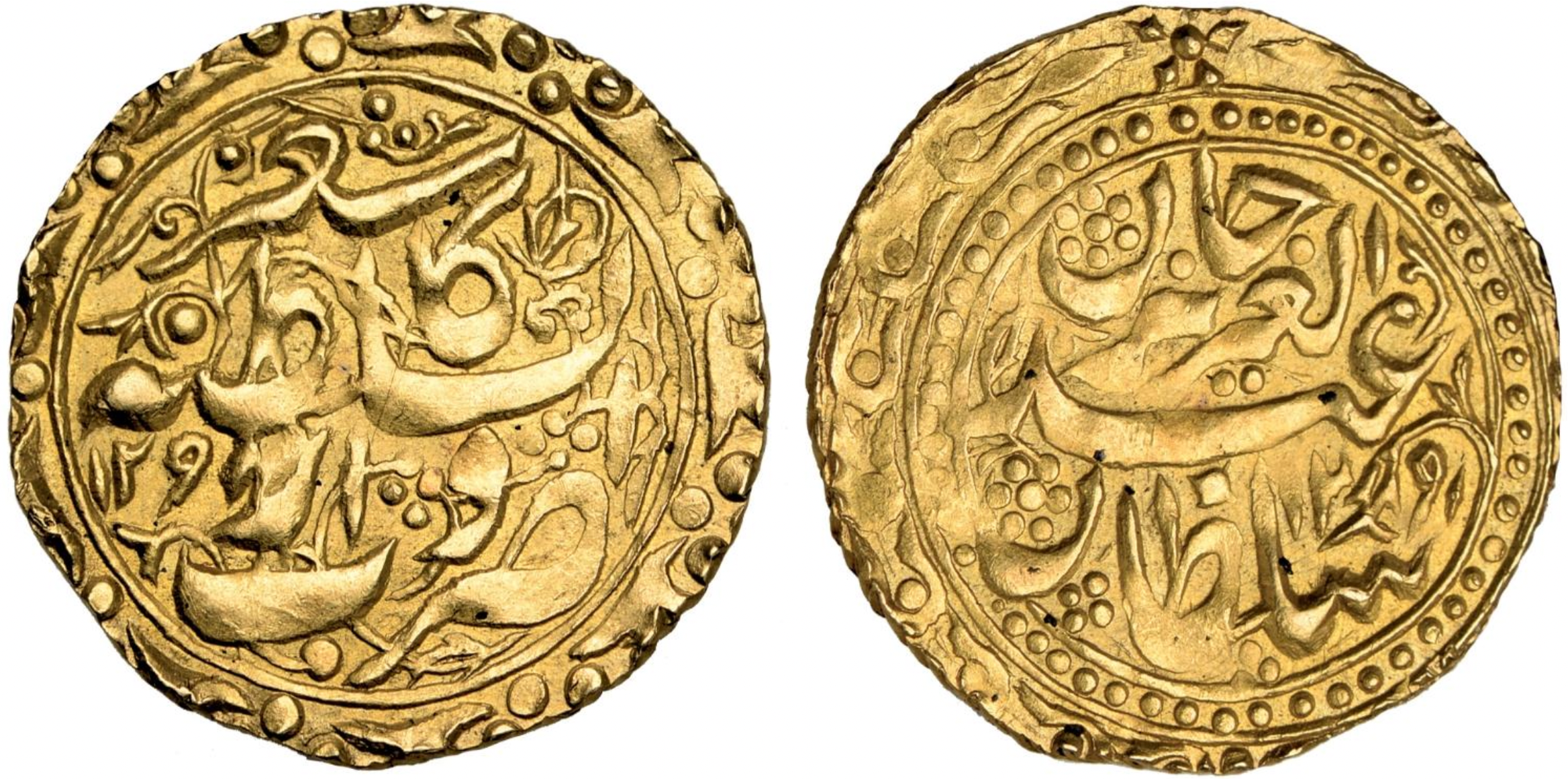
Fig. 1
There were three Yaqub Beg gold tilla coins. All of them were beautifully struck with clear inscriptions. The finest known one (PCGS MS62, Fig. 1) was won by an aspiring bidder at a consignment price of $10,500, while the other two were hammered at a hammer price of $3,200 and $3,000, respectively.Vintage Silver Coins


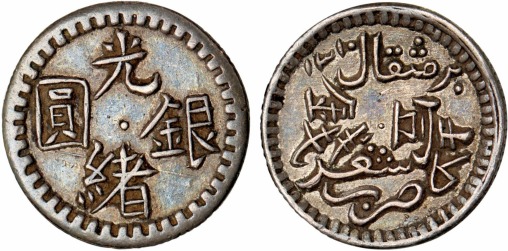
Fig. 2 Fig. 3 Fig. 4
After a lukewarm start, the scene was stirred up by a 1317 Kashgar five-mace silver coin (Fig. 2) from the collection of the famous Chinese vintage coin collector Eduard Kann. This key date coin had a deep purple toning, sharply struck. Finally, it was hammered at US$1,500, almost three times as its market price. It is an amazing result led by its pedigree and good toning. In following auctions, prices twice the market price have become common for good condition Sinkiang coins of this type from famous collectors.
Tariq art style script is a kind of Muslim writing style, similar to the official script in Chinese calligraphy. The famous Sinkiang 1 mace silver coin with Tariq art-style script (Fig. 3) was one of the highlights and appeared on the back cover of the catalog. It was the only Sinkiang silver coin that did not use Chinese characters to record values. Due to a lack of Chinese characters, its circulation was not smooth, so the minting was stopped soon after the issue. The one mace coin with Chinese characters to show its denomination was used to replace it in circulation. The short minting period has made this variety extremely rare, and even buttons made of such coins are extremely hard to find. This one mace silver coin is fully struck, with mint luster. The coin with excellent details amazed buyers with its very small existing numbers and excellent condition. The coin was hammered at a high price of $10,500 in multiple rounds of bidding. The following one mace silver coin (Fig. 4) was also struck with full pressure and had original toning. One of a few coins of this type that has been seen, which caused two buyers to bid fiercely. The price instantly reached $10,000; the final hammer price was $15,500., breaking the public auction record.
In AH 1323, the Kashgar Mint changed the characters on the Kashgar silver coin from "喀造光緒銀元" to "喀什光緒元寶" and changed the dragon on the reverse to the style same as other provincial coins. A set of 1323 A.H. Kashgar coins contains five coins, respectively, five mace, three mace (3 mace coins have 2 varieties), two mace, and one mace. The rarity increases with the decrease of the denomination. The one mace Kashgar silver coin is the pearl in the Sinkiang one mace dragon silver coin. The Kashgar three mace (Fig. 5) and one mace (Fig. 6) coins on the auction were fully struck on dragon scales, with clear inscriptions. Both of their conditions were in the top three for this kind of coin. In this auction, the one mace coin aroused spirited bidding when the price came to the $ 20,000 mark and finally ended up with a high price of $59,000, tripling the public auction record for this type, winning applause from the audience. The three-mace coin was then won by a strong buyer with a hammer price of $16,000.
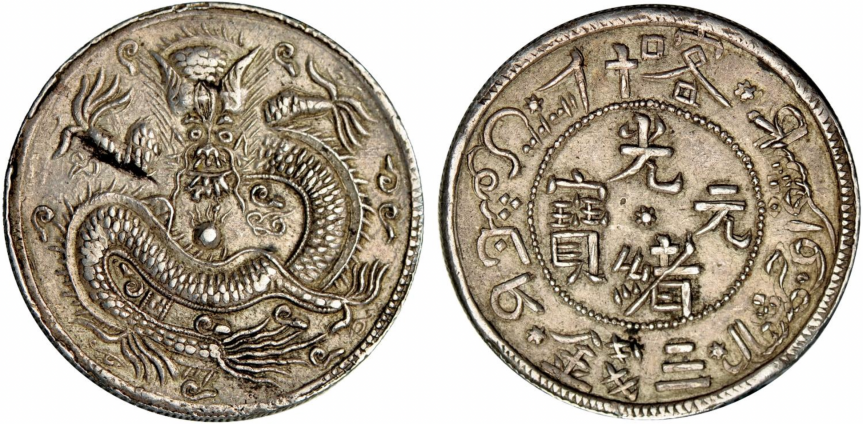

Fig. 5 Fig. 6
The five-mace silver ration coin with a single bat (Fig. 7) is as unassailable as the peak of the pyramid among the Sinkiang five mace ration coins, but the conditions of what I have seen previously were mostly unsatisfactory. The one in this auction is in the best condition I have ever seen, with a starting price of $12,000 and a hammer price of $36,000, which is a notable achievement. As for three one mace silver ration coins at the auction, the first one (Fig. 8 ) was full luster, with a clear pattern, as the most beautiful one mace silver ration I have seen. It was a pity that it was not graded by the grading company only because of the slight PVC residue on the surface, leaving a large space for appreciation. The lot started at $800 and hammered through several rounds of bidding at $12,500. The true collector will pay for the condition of the coin. As the cover lots of this auction, two silver coins with three scripts, namely Chinese, Manchu, and Uighur characters, were abolished soon after they were issued because they failed to meet the local usage habits. Only a few of them are known. They are the jewels in the crown of Sinkiang coin collecting and are among the collections of top Sinkiang coin collectors. These two silver coins were discussed by people at their appearance. For many years, because there were few existing examples and an extremely low survival rate, silver coins with three scripts have been the most mysterious Sinkiang coins, and many collectors have not been able to see one in their lifetime. It was the first time for these two coins to appear at an auction in half a century, so people are quite curious about their prices. We wondered whether they could inject a shot of strength into the current weak numismatic market. At the same time, we were expecting to see the birth of another great Sinkiang coin collector.
The five-mace silver coin with three scripts came first (Fig. 9). Its dragon was tall and straight, and the traces left by times on its body were natural and beautiful. Due to the rarity of its variety, excellent condition of preservation, and legendary pedigree from Kann and Goodman, as soon as it came up for bidding many floor bidders and phone bidders joined bidding. St. James's Auction, which is known for fast-paced auctions, actually spent nearly 20 minutes on this lot before it hammered at $310,000, realizing more than RMB 2.7 million. It greatly exceeded the expectations before the auction, breaking the record for a Sinkiang coin at a public auction. The three-mace silver coin with three scripts (Fig. 10) was then auctioned. It was full of luster and deeply struck. It also hammered at 215,000 US dollars. Many people on the floor gasped, saying that they had just witnessed the highlight of Sinkiang coins.
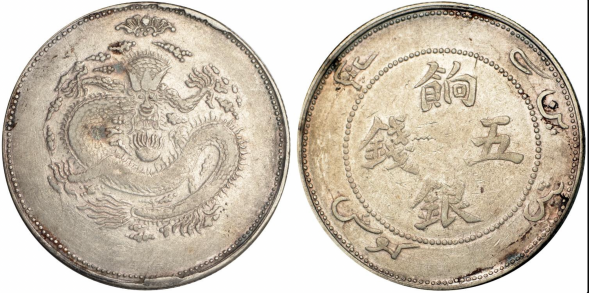 |
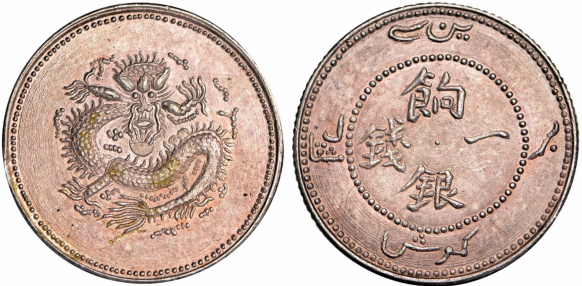 |
| Fig. 7 | Fig. 8 |
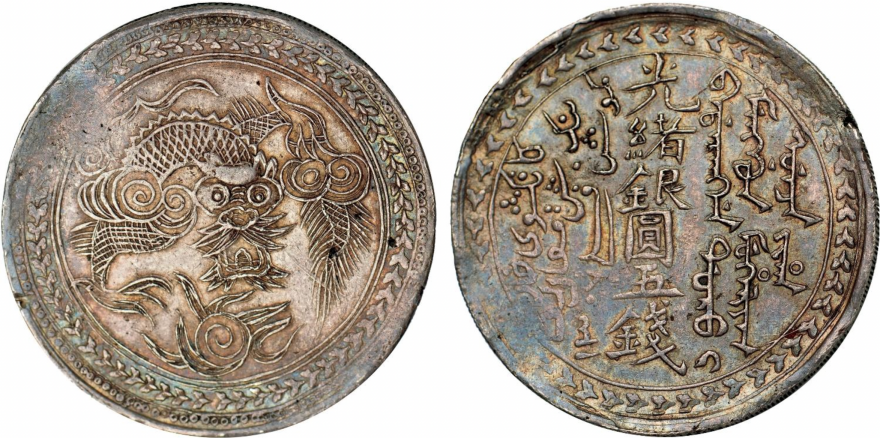 |
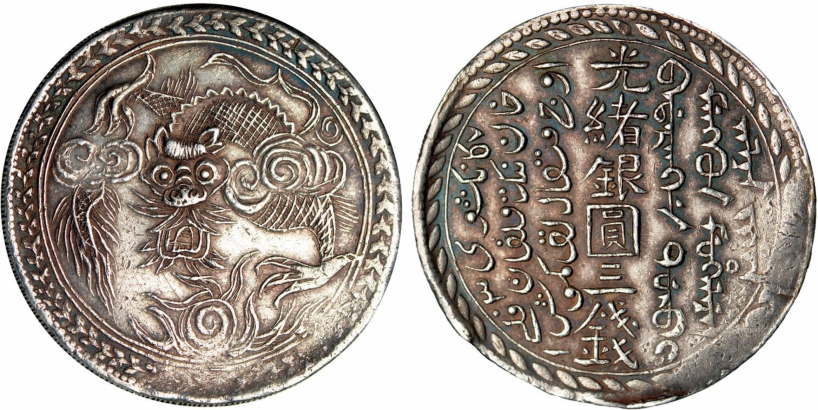 |
| Fig. 9 | Fig. 10 |
Tenga Coin
A Yaqub Beg five-cent silver coin (Fig. 11), Lot 251, might not have stood out in a star-studded catalog. It hammered at $1,500 and many buyers on the spot could not understand, but what was not widely known was that there was a detail on the coin that made it far rarer than its estimated value. The common date for the tenga five-cent coins issued by Yaqub Beg, a rebel in the late Qing dynasty, was from AH 1291 to AH 1294. However, this coin was dated AH 1290, which is quite rare. The coin refreshed people's cognition of the history of coins in Sinkiang. Lot 306 was an 1875 Yanghissar five-cent silver coin (Fig. 12), which was perfectly struck with four clear characters. The Yanghissar five-cent coin was in such good condition that it was hardly seen. After several rounds of bidding, the coin was realized at triple the price of the Yanghissar fiver-cent coin of the same grade.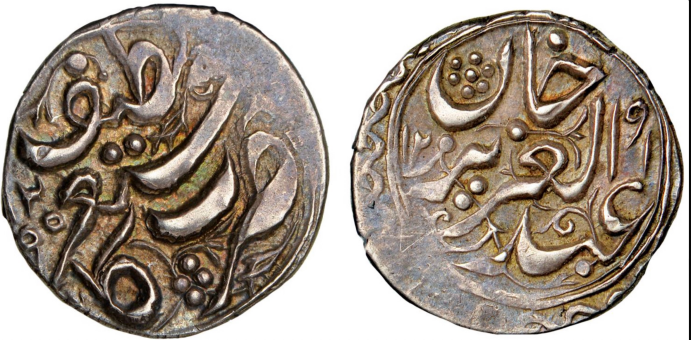 |
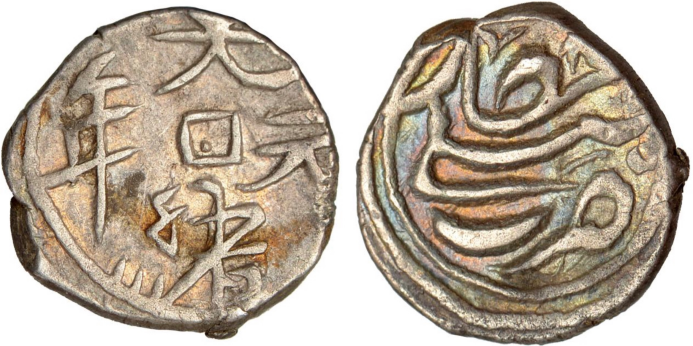 |
| Fig. 11 | Fig. 12 |
After the auction was over, I felt that for collectors who had decades of experience in collecting, the pleasing prices were the best return and reward for their persistence over the years (in addition to the fun in the process of collecting). It is also the best reference for those who come after. As long as a collector can border their horizon and accumulate experience in the process of collection, explore his vision and taste, and have a correct view of the value of the collection, he will surely have both a material and spiritual harvest in the end.
There is no denying that this auction will affect the market for a long time since then, attracting a lot of attention from collectors of Sinkiang coin. It will also trigger collectors of different levels to think about what kind of coin collection is successful in this era when it is increasingly difficult to become a great collector. Not everyone has the ability and opportunity to compete for those great rarities. However, as long as a collector can collect his favorites for decades and enjoy the fun in this process, his collection will blossom at the most suitable time, admired by those who come after him.
